UNOC 2025
Ambiguity function of biosonar cetaceans from HD observations and their automatic classification
by Nicolas Deloustal and al.
Cetaceans use acoustic signals to orient themselves and communicate. By analyzing these signals, we can better identify and understand them. The Ambiguity Function (AF), better adapted than the classical Fourier transform, is used to represent these signals. The representations are then analyzed by an autoencoder, which can reveal characteristics linked to the behavior, age and sex of the animals. This approach paves the way for more accurate monitoring of cetacean populations.
PolarPod-Perseverance in Arctic listening with AI to the Old World Symphonia
by Justine Girardet and al.
In the fjords of the Norwegian Arctic, multiple cetacean species converge around prey aggregation, leading to rare inter-species acoustic gatherings. After a century of decline due to whaling, species as humpback whale and sperm whale are gradually returning after decades of absence.
The CIAN center deployed hydrophones and embedded AI on the sail-powered PolarPod-Perseverance vessel to capture these “whale cocktail parties.” Using advanced listening algorithms, the team is analyzing daily acoustic cycles and testing both cooperative (foraging) and competitive inter-species interactions.
Source range estimation based on tranformer
by Marie-Lou Buisson and al.
- The underwater behaviour of sperm whales (Physeter macrocephalus) remains poorly understood, including their trajectories
- Passive acoustics readily estimate their direction, but range estimation remains challenging in case of small hydrophone arrays
- Existing methods based on time differences of arrival [1] or echoes [2,3] require large hydrophone arrays or lack precision
Can deep learning provide a way to estimate distances by integrating various observables ?
Marine Mammals survey
by Lilou Dantin and al.
Cetaceans location with small antennas remains imprecise due to the limits of actual location methods. To address this, a new AI-based method for position and trajectory estimation is proposed here. Given the lack of real data, a simulator named SeGaMas is currently developed to generate realistic acoustic scenes for model training.
Sotalia dolphin, long term survey
by Lisa Ferré and al.
The Guiana dolphin (Sotalia guianensis) is a coastal and estuarine species classified as “endangered” that has a restricted global distribution (notably resident of the Guiana coastline). Dolphin produces 3 types of signals:
whistles, click and buzz.
Passive Acoustic Monitoring (PAM) allowed us to monitor this population through their whistles.
Can automated whistle detection provide enough insights aiming to monitor the population of Sotalia guianensis ?
Cachalots in maritime traffic areas
by Stéphane Chavin and al.
The Pelagos Sanctuary, a crucial marine protected area in the northwestern Mediterranean Sea, provides important habitat for the sperm whale (Physeter macrocephalus).
Long-term monitoring of oceanographic conditions is essential to evaluate the impacts of environmental variability and human-induced pressures, such as climate change and maritime traffic (Fig. 1), on sperm whale populations.
This information is required to refine conservation strategies and advance the sustainable management of the Pelagos Sanctuary.
Analysis of sperm whale (Physeter macrocephalus) dialogues, click by click: an ethoacoustic approach
by Lara Berkenbaum and al.
Our study focuses on ‘vocal sparring’, an acoustic exchange between juvenile male sperm whales of the same age. In this context, the frequent overlap of click trains complicates the attribution of sound emissions to individuals, particularly as inter-pulse intervals cannot be exploited. To solve this challenge, we developed two complementary methods: source localisation and acoustic identification. Combined, these approaches allow us to assign each click to a specific individual, opening new perspectives for ethoacoustics and individual identification. This enhances our understanding of the social and acoustic dynamics among juvenile male sperm whales.

